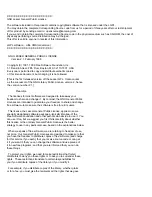
40
Copyright © Acronis, Inc., 2000-2010
The retention rules are effective if the archive contains more than one backup. This means that the
last backup in the archive will be kept, even if a retention rule violation is detected. Please do not try
to delete the only backup you have by applying the retention rules
before
backup. This will not work.
Use the alternative setting
Clean up archive
>
When there is insufficient space while backing up
(p.
206) if you accept the risk of losing the last backup.
1. Delete backups older than
This is a time interval counted back from the moment when the retention rules are applied. Every
time a retention rule is applied, the program calculates the date and time in the past corresponding
to this interval and deletes all backups created before that moment. None of the backups created
after this moment will be deleted.
2. Keep the archive size within
This is the maximum size of the archive. Every time a retention rule is applied, the program compares
the actual archive size with the value you set and deletes the oldest backups to keep the archive size
within this value. The diagram below shows the archive content before and after the deletion.
There is a certain risk that all but one backup will be deleted if the maximum archive size is set
improperly (too small) or a regular backup turns out to be too large. To protect the recent backups
from deletion, select the
Never delete backups younger than
check box and specify the maximum
age of backups that must be retained. The diagram below illustrates the resulting rule.
















































